It goes without saying that you want the biggest, boldest blooms, and the most flowers possible on your roses, right? Water is a key part of that. No moisture, no flowers.
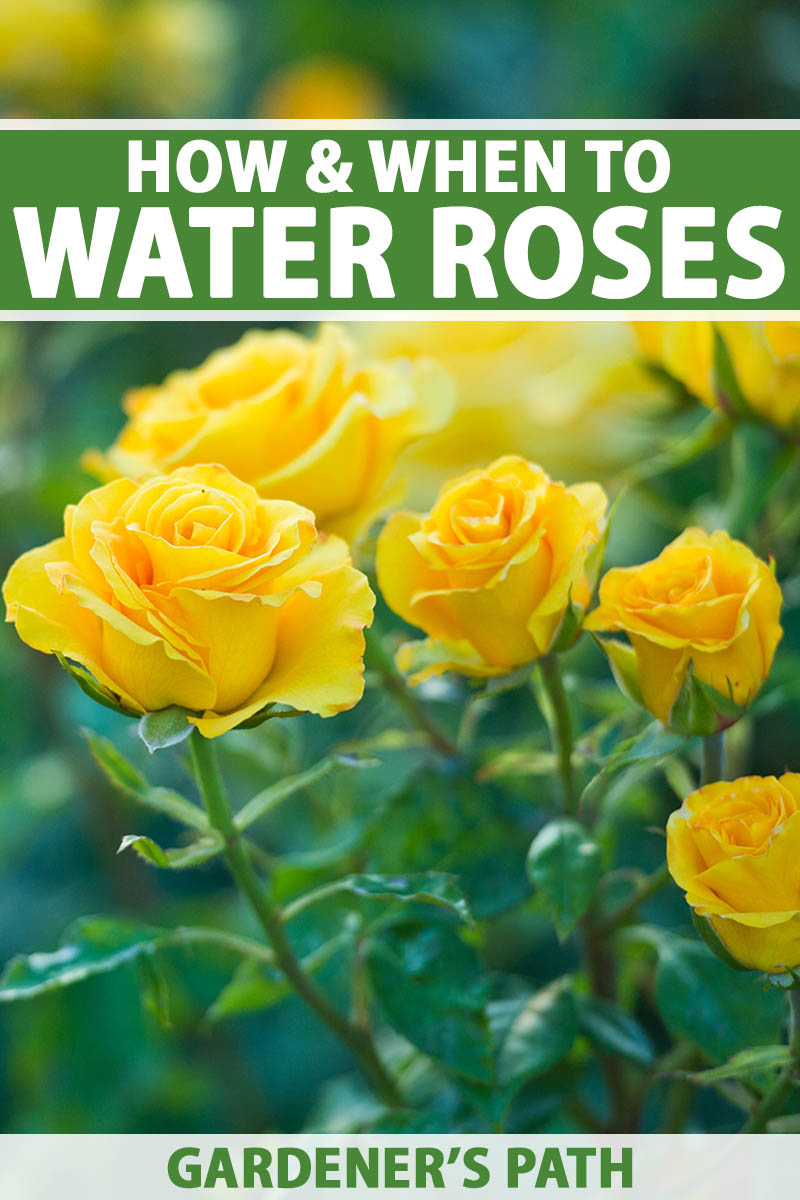
We link to vendors to help you find relevant products. If you buy from one of our links, we may earn a commission.
Sufficient moisture in the soil enables the plant to move that moisture into the leaves, which lose water via transpiration.
When the plant loses more moisture than it takes up, it becomes stressed and can even die – if the lack of enough water goes on long enough.
Conversely, too much water can be as big of a problem. If the soil is waterlogged and soggy, it prevents the roots from accessing oxygen, and they essentially drown.
Watering at the wrong time or in the wrong way can also lead to deadly diseases because fungi and other pathogens need water to spread.
To set you on the right path, we’re going to run through the following:
What You’ll Learn
It takes a little bit of trial and error, but once you nail it, you’ll develop a sixth sense for when your plant needs a little moisture.
Ready to become a watering expert?
How Much Water Do Roses Need?
There is no precise amount of water that anyone can recommend across the board.
If someone tells you that your rose needs two inches a week, while their advice might be well meant, this recommendation is not accurate for everyone.
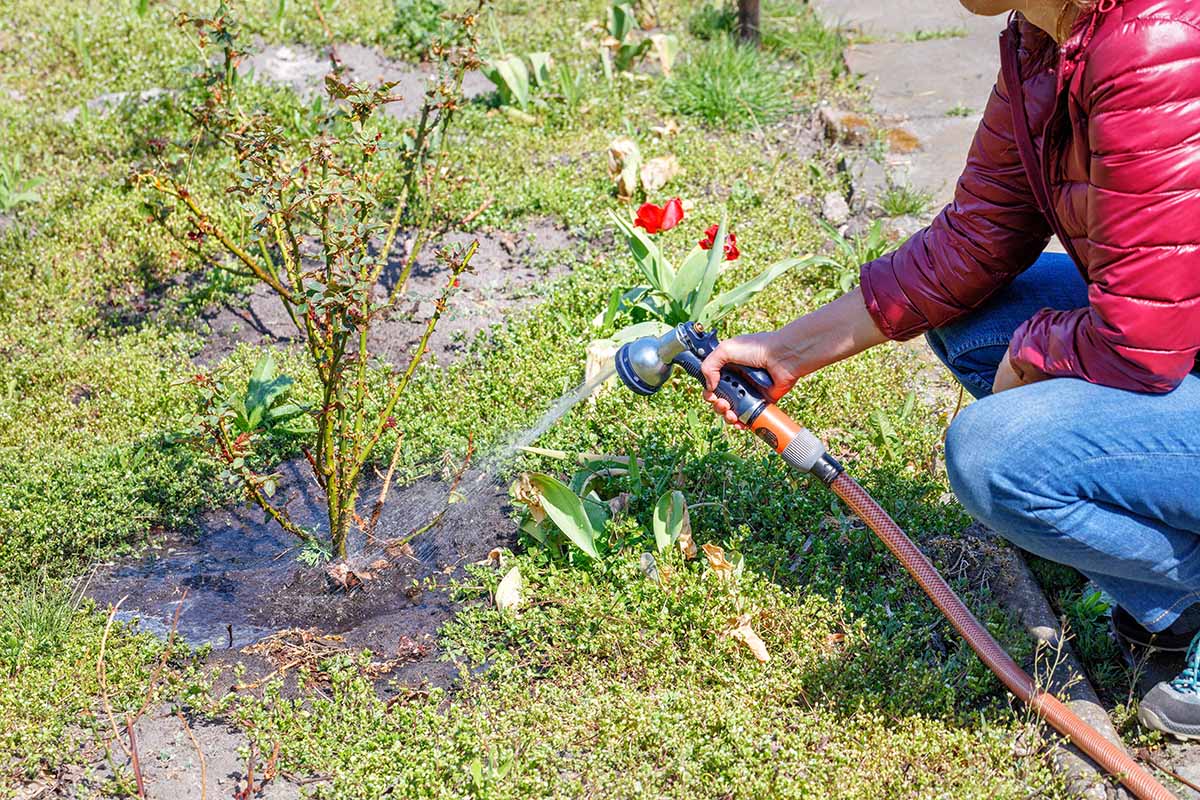
Water needs depend on a multitude of factors. Do you have lots of rain in your area? How hot is the weather right now? How well does your soil drain? Is the plant growing in full sun or a bit of shade?
Even how far apart your plants are situated impacts the amount of moisture they require.
As your plants are waking up in the spring after winter dormancy, they might not need supplemental irrigation if you receive plenty of rain. But if you have a dry spell in spring, it’s vital to add moisture as the plants are starting to put on new growth.
In the summer, keep an eye on your plants and irrigate them regularly if the rain doesn’t take care of it for you. In fall and winter, you can cut back on watering, only providing moisture when the ground dries out completely, but not more often.
The best way to figure out whether your plant needs irrigating is to touch the soil. Stick a finger down into the soil at the base of your plant. Does it feel muddy or soggy?
If so, don’t even think about breaking out the hose. In fact, you might want to work on improving your garden drainage or move your rose to a container if the soil seems to be soggy more often than not.
Does the soil feel bone dry down to your second knuckle? Unless it’s fall, you probably waited a little too long, and now’s the time to add some H2O.
Your goal is for the soil to feel like a well-wrung-out sponge at all times. If that’s how it feels, you nailed it. That’s the right amount of moisture.
If existing leaves start turning yellow and drying out, it’s possible that you’re chronically underwatering. On the other hand, brown, mushy leaves can indicate too much moisture.
Remember that the amount of water you’ll need to add will change from day to day depending on the environmental conditions.
When to Water
The best time to provide supplemental irrigation to your roses is in the morning. That way, any droplets that inevitably land up on the foliage can dry out over the course of the day and be less likely to invite fungal issues.
If you can avoid it, try not to water when it’s overcast or if the weather forecast predicts that it will be cloudy all day.
You should aim to irrigate as infrequently but as deeply as possible.
Try not to water daily or every other day because shallow watering encourages the plant to develop shallow roots.
Shallow roots are undesirable because they dry out more quickly and they’re more exposed to winter freeze and extreme summer heat.
How to Water Roses
Aim the stream of liquid next to the base of the plant. You want to target the roots but avoid splashing the stems or leaves. I can’t stress how important this is.
Roses are prone to fungal diseases – like black spot and powdery mildew – and splashing water landing on the foliage and canes increases the chances that fungi can breed and infect your plant.
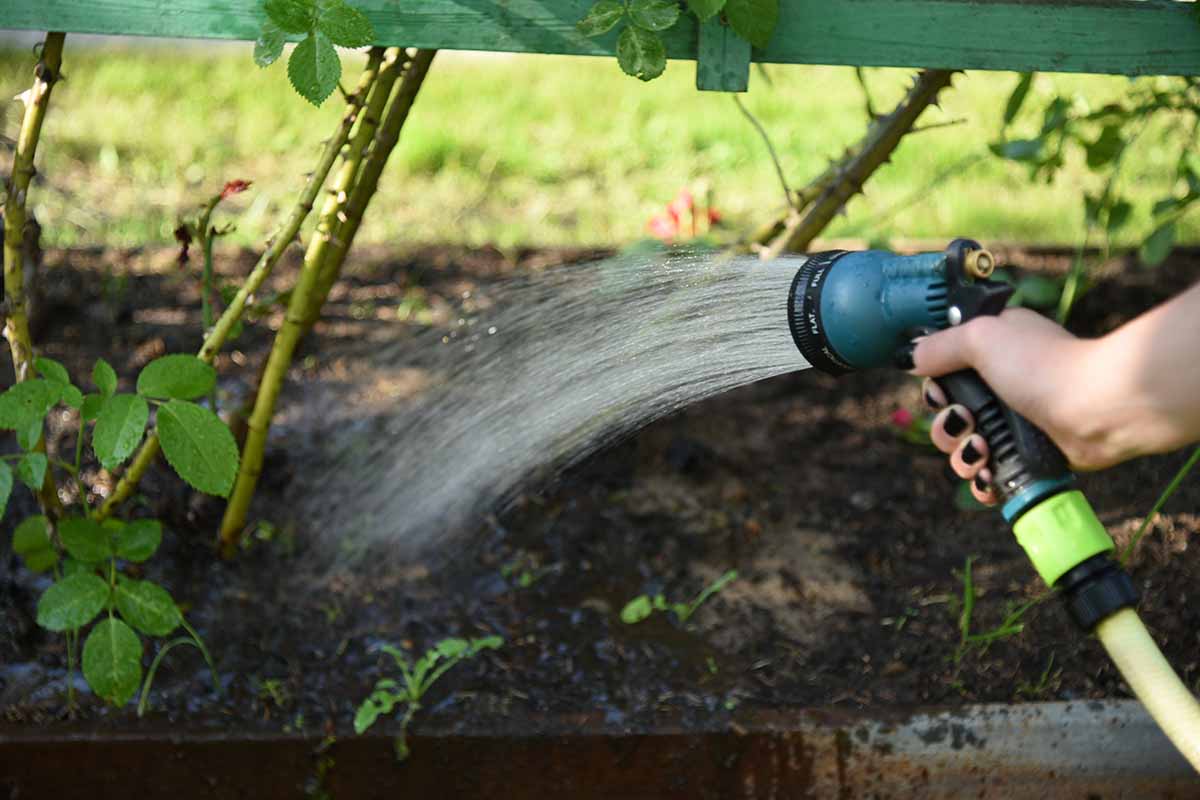
As you pour the water, stop if it starts to run off the surface of the soil away from the plant. Allow it to soak in and then start irrigating again. The goal is to create a puddle that soaks into the soil rather than running off or splashing up onto the plant.
If you’re new to growing roses, use a watering can for the first year. This allows you to closely monitor how much moisture you’re adding and control the stream.
If you primarily use a garden hose for irrigating, that’s fine. You’ll just need to be more careful about checking the soil moisture as you water.
Drip irrigation and sprinklers can work, though these methods aren’t ideal. Both make it difficult to irrigate deeply, and sprinklers wet the foliage. If you can set your drip irrigation system to water slowly, deeply, and infrequently, then it’s an excellent option.
Avoid using a hose attachment that has a jet or strong stream because this increases the chance of splashing the foliage. Instead, use a low pressure stream, a bubbler, or buy a nozzle that has a rose or garden bed setting.

I use a breaker nozzle like this one by Dramm available at Amazon because it breaks up the stream but still applies a good amount of liquid without spraying randomly all over the place.
Special Considerations
A newly planted rose needs extra moisture during the first year. The plant is trying to establish itself and needs sufficient moisture to do so.
Keep in mind that plants growing in fast-draining sandy soil or in containers will dry out more quickly and need more frequent watering. Check them every few days during warm weather.
If you have climbers growing up a wall, particularly a brick or concrete wall, you’ll need to provide extra water during extreme heat. The wall will reflect additional heat onto the plant and dry it out more quickly.
Once or twice a month during the summer, get out there in the morning on a sunny day and spray your plants from top to bottom with the hose. This will knock away aphids, spider mites, dust, and dirt.
Add a layer of mulch to the top of the soil around the plants to conserve moisture. Shredded newspaper, aged sawdust, grass clippings, compost, leaf litter, hay, well-aged manure, or hardwood mulch all work.
You’ve Become a Watering Wizard
I know, it seems like irrigating roses should just be a matter of splashing some liquid in their general direction, since so many of us start out watering that way.
But trust me when I tell you that appropriate watering will make a world of difference to the health of your plant.
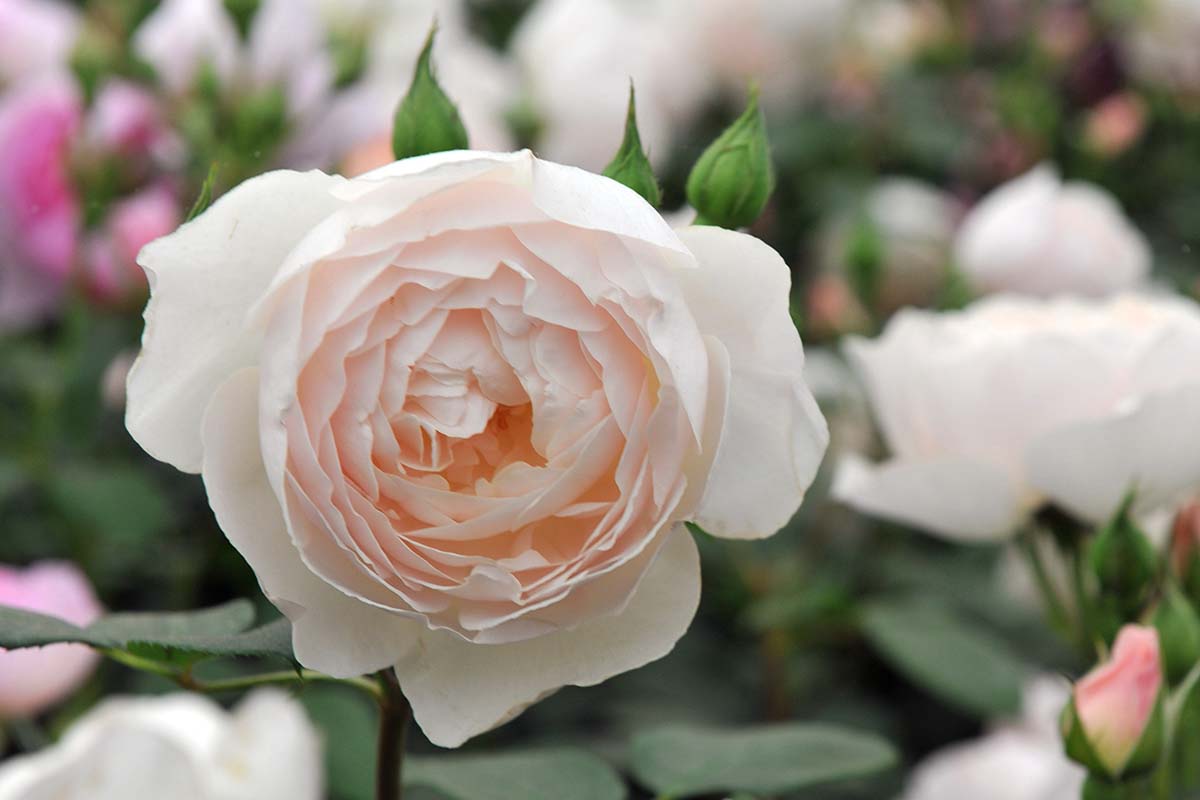
What types of roses are you growing? What is your growing environment like? How often do you find you need to irrigate? Share the details in the comments section below.
Hopefully you’re now feeling confident about your watering routine. If so, you might want to focus on some other aspects of rose cultivation. Add these guides to your reading list next:
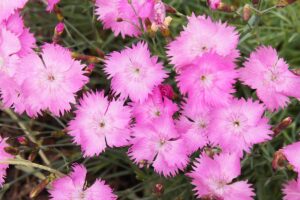

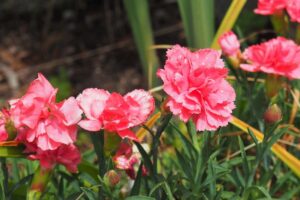
hello, I have knockout roses and the weather is very hot temp between 90-100 degrees. ihave to water at least twice a week. The soil dries out very quickly. would it help me to add some sort of mulch to hold moisture in and around plant.
Hi Alma, it would definitely help to add a few inches of mulch to keep that moisture in the soil. You’ll still probably have to water often, but it will be less often than you are now. Luckily, Knock Out roses are pretty drought and heat tolerant so they should be fine despite the high temperatures.